Whenever I take on a new project, I always try to think ahead. I like to make sure I solve any potential problems before they can even happen. This is the exact approach I took when remodeling my kitchen. From getting the right materials to checking the kitchen electrical requirements, every detail had to be perfect before I could proceed.

I’ve covered various renovations in other posts. Today, we’re going to be focusing on the latter issue: kitchen electrical requirements. Seeing as they change every three years, making sure your new installation will be up to code can be quite a task. Unfortunately, failing to do it correctly can be very costly.
If you want to avoid the fines and headaches while also streamlining your kitchen upgrade, keep reading.
Why the Electrical Code Matters

Whether you’re installing a new chandelier like my Luna Pendant or simply switching out your old appliances for new ones, the kitchen electrical requirements are always something you’ll want to pay close attention to. Don’t skip these details loves. The National Electrical Code (NEC) is updated every three years, and for good reason.
If you’ve ever visited a friend’s older house and had a look around, chances are, you’ve noticed that older homes aren’t built quite like the new ones are. They might function fine on a surface level, but below that, the older wiring setup and aging circuit breakers pose a real safety issue. Our cabin electrical had to be completely replaced. It was costly, but well worth the investment. Safety first.
The purpose of the NEC is to ensure electrical safety in all modern buildings. Older electrical systems aren’t designed to handle the power requirements of modern-day appliances and devices. By requiring buildings to adhere to these standards, the NEC makes it possible for you to enjoy power in your home without worry of failure, fire, or worse.
The Types of Lighting in Your Kitchen

Now that we’ve established the purpose of the NEC, let’s move on to the requirements you’ll have to think about when doing a smart and fun kitchen renovation, starting with the lighting. After all, we don’t want to deal with the fines or delays that come from not meeting the proper kitchen electrical requirements!
There are quite a few different types of lighting you might have in your kitchen, including:
- General lighting
- Pendant lights
- Accent lights
- Area lighting
- Task lighting, and
- Cove lighting
Fortunately, no matter what type of lighting you have, the requirements are basically the same. Since light fixtures don’t require a lot of amperage (especially if they’re using LED light bulbs), you can often fit more than one light source on a single lighting circuit. However, you want to limit each circuit to a maximum of 8 to 10 lights (or outlets).
Pro tip: install motion-sensing puck lights in places where wiring additional lighting may pose too much of an issue!
The Basic Requirements
Your kitchen needs to have at least one lighting circuit. It needs to be permanent, meaning it cannot be on GFCI. This circuit will cover your ceiling fixture, under-cabinet lighting, and recessed lights.
At a minimum, this needs to be a 120-volt 15-amp circuit. However, I would personally recommend going with a 20-amp circuit so you have room to adjust lighting as needed.
Wiring for Small Appliances
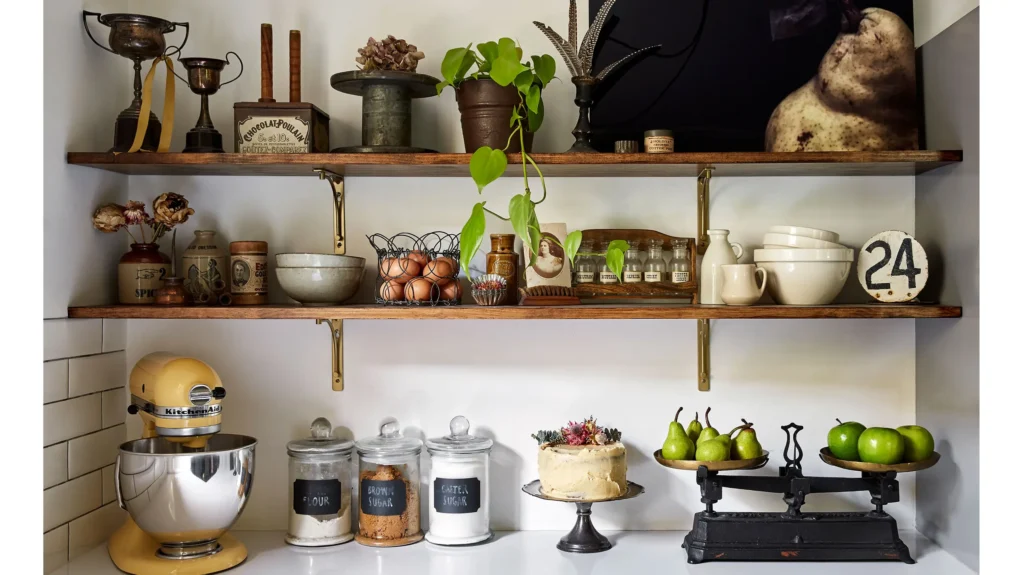
With lighting out of the way, let’s move on to small-appliance branch circuits. Whether you only use your kitchen outlets for your coffee maker or you have a ton of different kitchen gadgets, making sure that the kitchen electrical requirements are a must.
Fortunately, the requirements for a small appliance circuit aren’t very high. Small appliances have lower electrical requirements than permanent installations. This makes it slightly easier to ensure your small appliance circuits are up to code.
Spacing Requirements
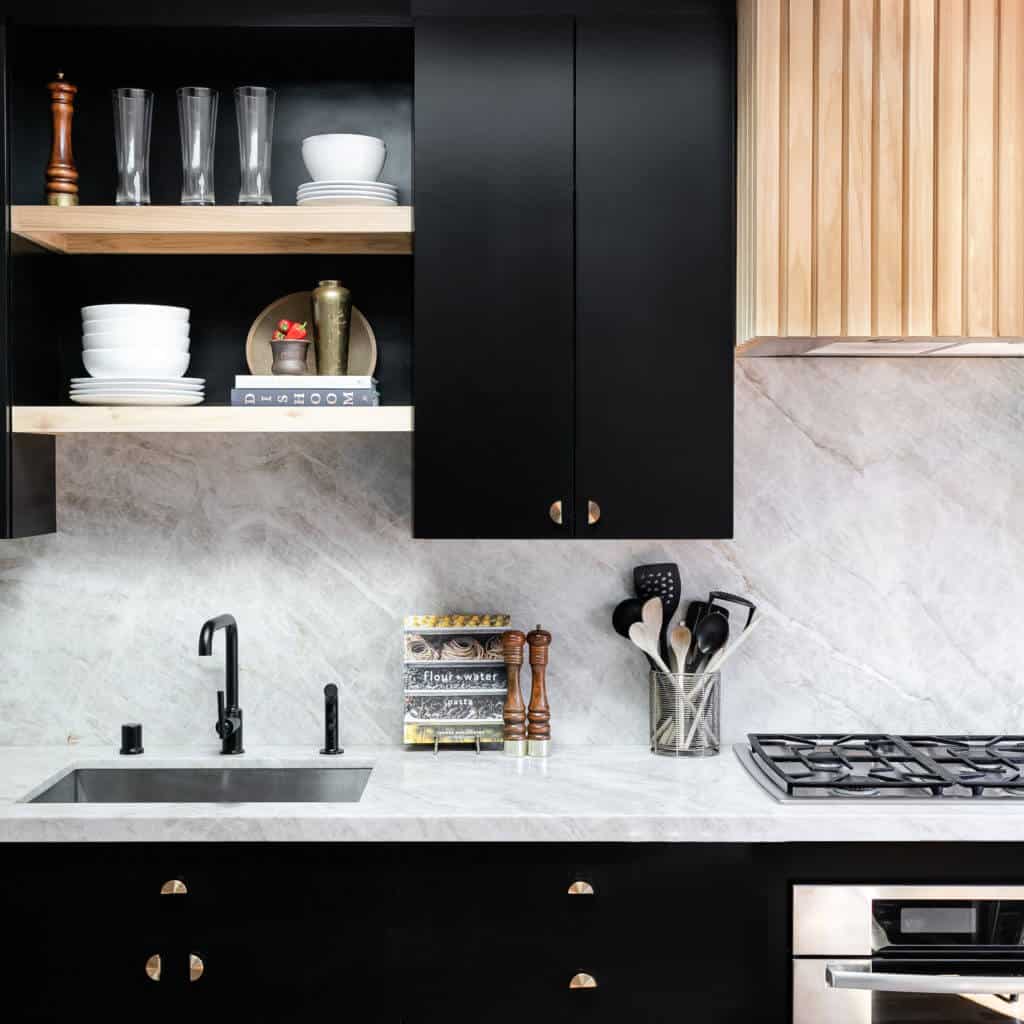
One of my biggest complaints about older homes is how you often need to stretch appliance cords in order to get everything plugged in and spaced properly. The NEC addresses this, setting a maximum distance between kitchen outlets of 48 inches.
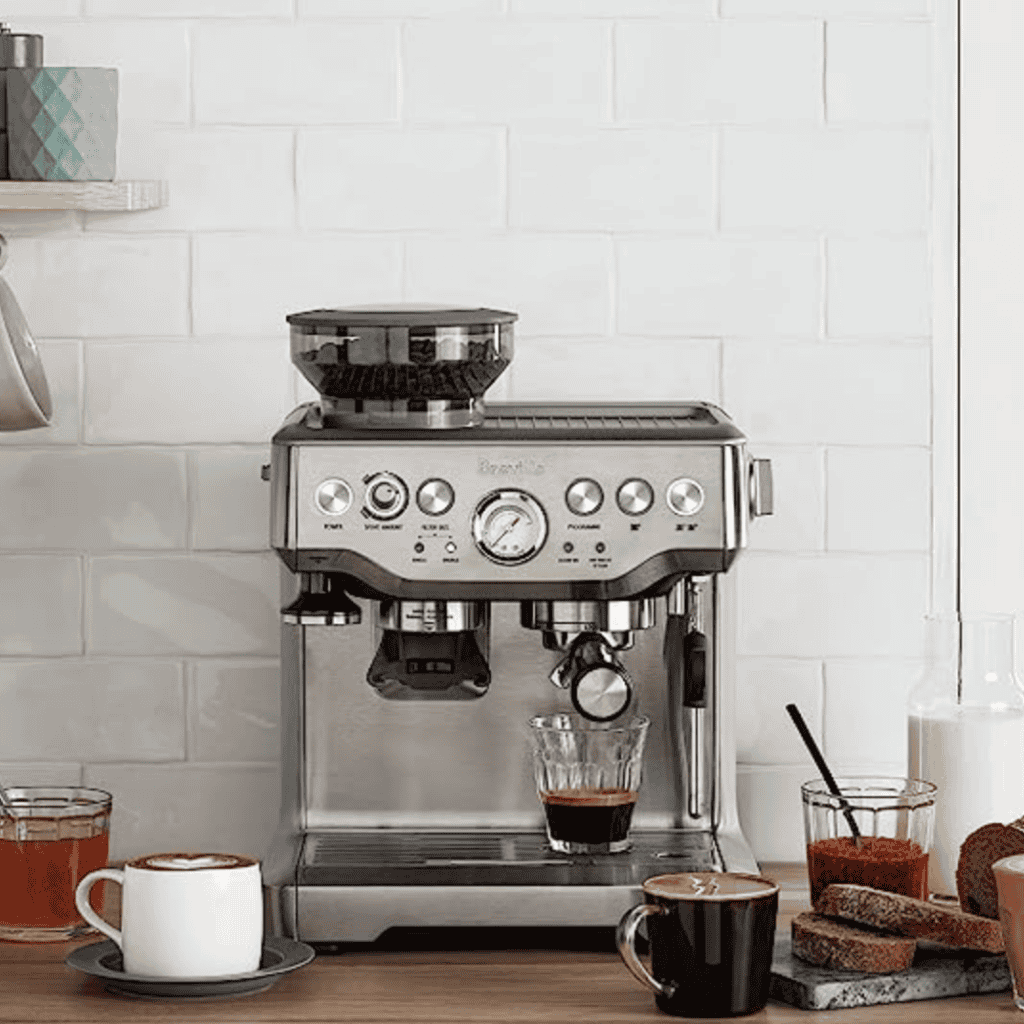
Most new appliances only provide consumers with a two-foot cord at most. By following these guidelines for your outlet placement, you’ll be able to ensure you can plug in both your (my new) espresso machine and your toaster without being tempted to use an extension cord.
Kitchen Electrical Requirements for Receptacles

First things first: you can’t mount your electrical outlets face up. You also will want to keep each electrical receptacle on your kitchen walls within 20 inches above your countertop surfaces, and outlets are required if your countertop has a space of 12 inches or more.
You’ll need to use at least two 20-amp, 120-volt GFCI outlets in your kitchen, although more will likely be required (depending on the size of your kitchen). Only GFCI-protected outlets can be used in your kitchen, regardless of where the outlet is located inside the kitchen.
Your kitchen outlets will also need AFCI (Arc-Fault Circuit Interrupter) protection. Additionally, outlets—no matter the location—must be TR, or “Tamper-Resistant”, outlets. This type of outlet uses an internal shutter to help prevent children from sticking items inside the outlets.
Kitchen Electrical Requirements for an Island

Previously, every kitchen island or peninsular countertop was required to have an outlet for the first nine square feet, with an additional outlet being required every eighteen square feet after. However, this is no longer the case as of 2023.
Instead, the current guidelines say that if you don’t install a receptacle on your island countertops or work surface, you’ll need to provide provisions for “future addition of a receptacle outlet to serve the island or peninsular countertop or work surface”.
Since these guidelines change every three years, I would personally recommend just installing the outlet(s), as you’ll already need to have provisions for them anyway.
Wiring for Large Appliances
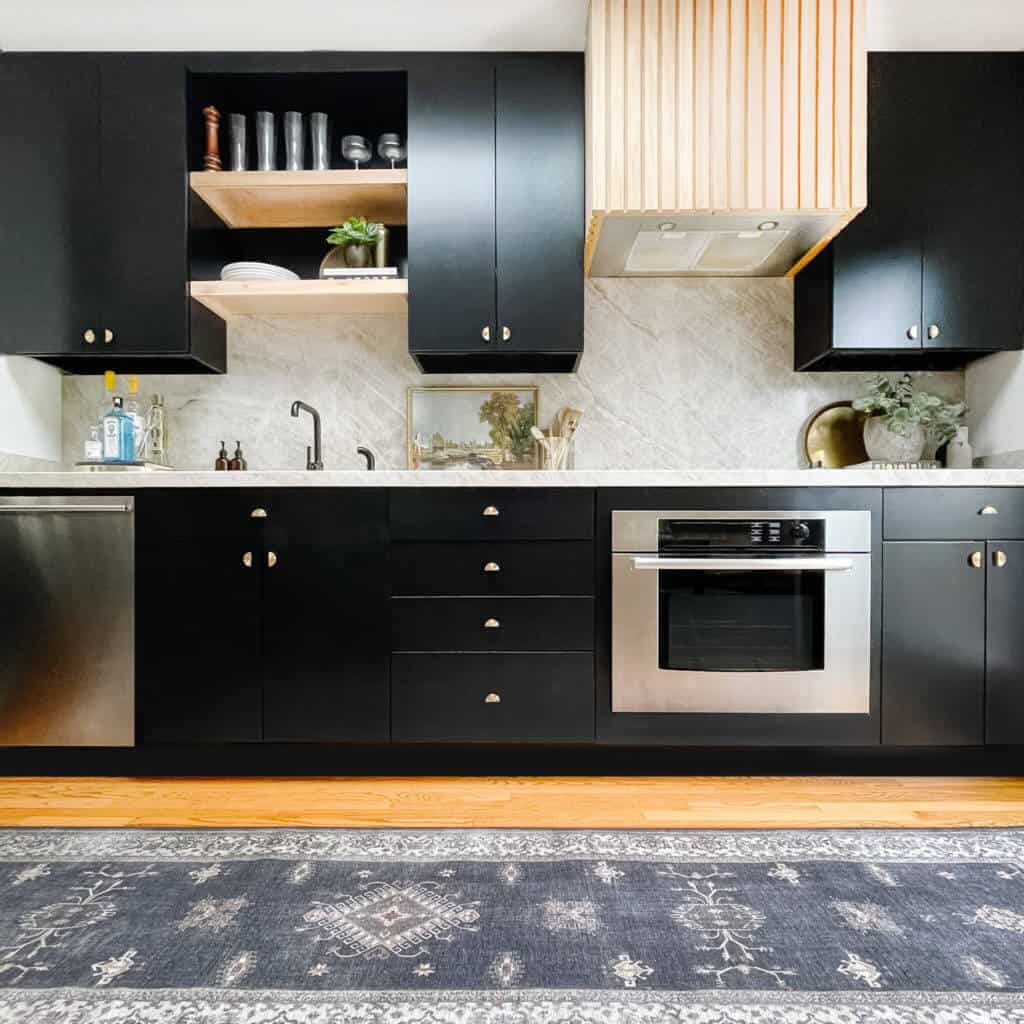
As you might expect, the higher power requirements of large appliances result in slightly more stringent kitchen electrical requirements. Also known as “dedicated” circuits, these circuits must have both GFCI protection and AFCI protection. As the name implies, each circuit is dedicated to a specific large appliance in your kitchen, rather than being shared by various appliances.
You can find the requirements for various appliances below.
Dishwasher

Depending on the electrical requirements of your dishwasher, it will need either a 15-amp or 20-amp dedicated circuit. GFCI protection is required, as is AFCI protection.
14/2 cable is the standard cable for 15-amp circuits, but you will need to change the cabling if you decide to go with a 20-amp circuit instead.
Electric Stove
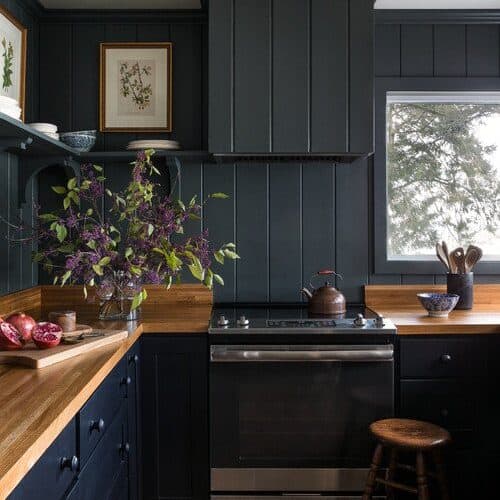
In addition to being on a separate circuit, electric stoves also have much higher amperage requirements. Rather than using a 120-volt 15 to 20-amp circuit like most of the other appliances found in your kitchen, an electric range requires a 240-volt, 50-amp circuit to be “up to code”.
Garbage Disposal Kitchen Electrical Requirements

Not all of us have a garbage disposal, but if you’ve ever needed a quick way to get rid of leftover crumbs in your cereal dispenser set, you’re probably glad you have one! Like other appliances, the requirements for a garbage disposal are relatively low.
Your garbage disposal requires either a 15-amp or a 20-amp dedicated circuit with both GFCI and AFCI protection. The minimum amperage will depend on your particular garbage disposal.
Microwave Kitchen Electrical Requirements
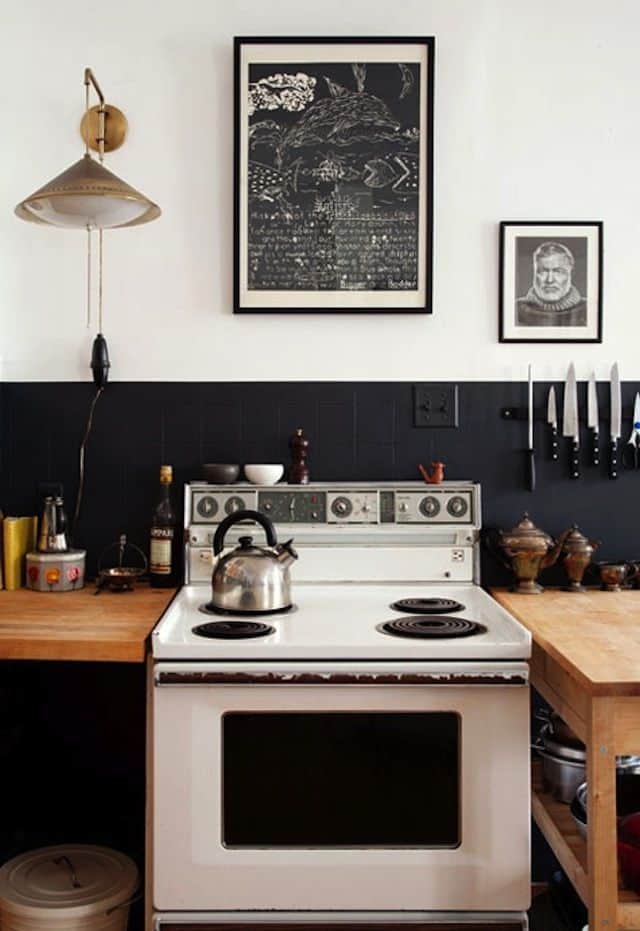
Built-in microwave ovens are unique. Although they do require a 20-amp circuit with both GFCI and AFCI protection, this same circuit can be utilized by another appliance at the same time and still be up to code.
Refrigerator Kitchen Electrical Requirements

Lastly, the refrigerator! Requirements for this must-have appliance are fairly straightforward. It must be on a 20-amp circuit with both GFCI and AFCI protection. Although not explicitly required, it is highly recommended to run your fridge on a dedicated circuit.
The Risks of Ignoring the Code

Did you know that 49% of all house fires start in the kitchen (and 80% of the stoves involved are electric)? Poor wiring might not necessarily be the main reason that all of of these fires occur, but by making sure you adhere to the current kitchen electrical requirements, you can help avoid becoming part of the unlucky 49%.
Beyond that, ignoring these requirements also increases the likelihood of electrical shocks, appliance malfunctions, failed inspections, fines for lack of compliance, and even denial of insurance coverage!
It’s always a good idea to make sure you’re up to code, whether you’re talking about the kitchens, dining rooms, or any other space in your home. With that in mind, there’s one very important thing to mention here. Your local code may differ drastically from the recommendations released by the NEC. As such, make sure to look into your local requirements when planning any renovations or upgrades.
In Summary

Whether you’re doing an entire kitchen remodel or just upgrading your kitchen essentials, the kitchen electrical requirements are something you’ll want to pay attention to. After all, safety is key, and staying compliant is one of those things that can help you stay safe.
True, upgrading to ensure your home is compliant can be quite an undertaking, especially if your home hasn’t been upgraded recently. Still, the peace of mind is definitely worth it, and you’ll have to anyway if you want to pass inspection.
Hopefully, after reading through, you have a general idea of what you’ll need to upgrade in your home to make it compliant. Knowing this ahead of time can help you save a lot of time and money later on, so I highly recommend doing your research.
As always, thanks for reading. I’ll be back soon with more tips, tricks, and tidbits!
Kitchen Electrical Requirements: Frequently Asked Questions

What electrical is needed in a kitchen?
The electrical system in your kitchen requires a separate lighting circuit of 15-20 amps, dedicated circuits for most large appliances, and a minimum of two 120-volt, 20-amp circuits for small appliances.
What are the requirements for electrical outlets in a kitchen?
All new kitchen outlets must be GFCI and AFCI-protected, in addition to having a tamper-resistant design. You’ll be able to tell if your outlet is tamper-resistant from the TR labeling on the front. These are a must-have, as you definitely don’t want to risk any children trying to stick something inside of an outlet when they head inside for some tasty treats and get distracted!
Is there a difference between GFI and GFCI?
When it comes to electrical wiring, you’ll often see the terms GFI and GFCI used interchangeably. GFCI stands for “Ground Fault Circuit Interrupters”, while GFI stands for “Ground Fault Interrupters”. Although the names differ, the devices are the same.
How many outlets can you have on a 20 amp circuit in a kitchen?
You’ll want to limit the 20-amp circuit in your modern kitchen to a maximum of 10 outlets. This will keep you within the recommended 80% limit of the circuit.
Does a fridge need a 20 amp circuit?
Yes, fridges require 20-amp electrical circuits. Although not specifically mandated by the NEC, it’s a good idea to have a dedicated circuit for your fridge if possible.
Can outlets and lights be on the same circuit?
No, kitchen lighting is required to have its own separate circuit in your kitchen as of the 2023 NEC requirements.













